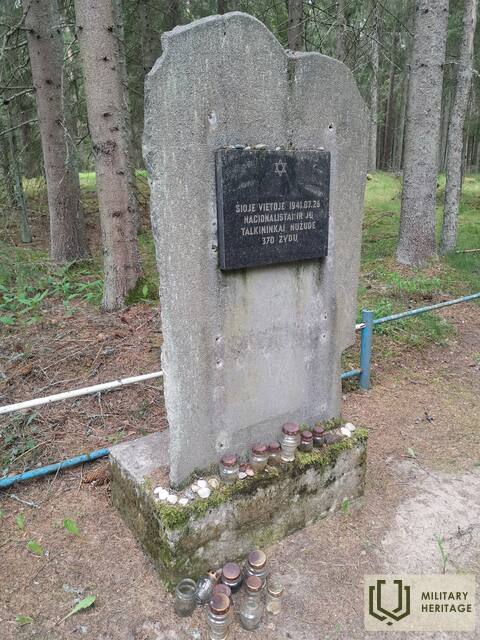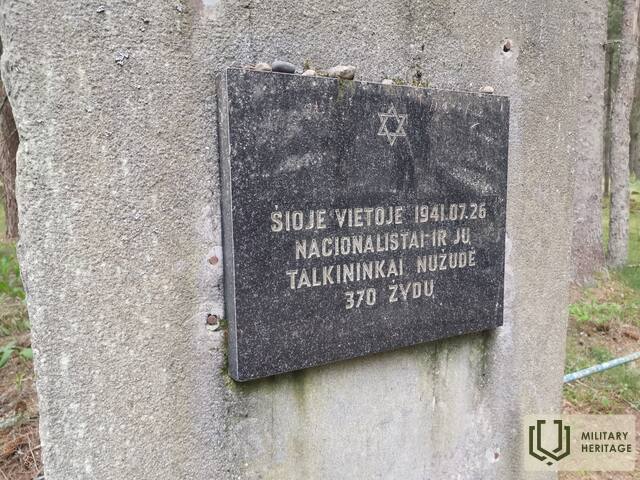Kražiai Jewish Holocaust site in Kuprė Forest
Memorial site

In the Kuprė forest, about 13 kilometers from the town of Kražiai, there is the site and grave of the Kražiai Jewish massacre.
Before World War II, the town of Kražiai was home to about 1,500 people, including about 80 Jewish families – 450-500 residents of Jewish origin. In the summer of 1941, the Jews of Kražiai were isolated in a ghetto set up in the manor barn.
On July 26, 1941, the mass murder of the Jews of Kražiai took place in the Kuprė forest. About 300 adults and young people were taken to the forest by trucks. During the operation, the Jews were lined up in groups and put into trucks. On the way to the massacre site, they were handed shovels - a sign that the victims would have to dig pits. The Jews dug a deep, oblong pit in the Kuprė forest. Later, they were forced to undress, and the execution took place in an organized manner: the victims were placed five at the edge of the pit, shot in two rows - the first shot in the back or chest, the second - in the head.
The killings were carried out by both members of the local TDA (National Labor Protection) unit and German soldiers and officers. The killings were delayed due to a broken-down truck and resistance in the Kražiai ghetto, when the prisoners realized that those who had been taken away were not returning. Due to these circumstances, the planned execution of 12 Soviet activists on the same day was not carried out. These individuals were later transported to Raseiniai prison and most of them were released.
German security forces confiscated valuables belonging to Jews after the massacre. The result of the operation was that almost all members of the Kražiai Jewish community over the age of 12 were exterminated.
Currently, a monument stands at the site of the Holocaust, and the site of the killing pit is enclosed by a fence.
Used sources and references:
Related timeline
Related stories
Like being born a second time
In July and August 1941, the Nazi authorities in Kražiai massacred almost the entire community of the town. Marytė Gerčienė, a prisoner of the Kražiai ghetto and a collective farmer of the K. Požėla collective farm, miraculously survived this tragedy.















